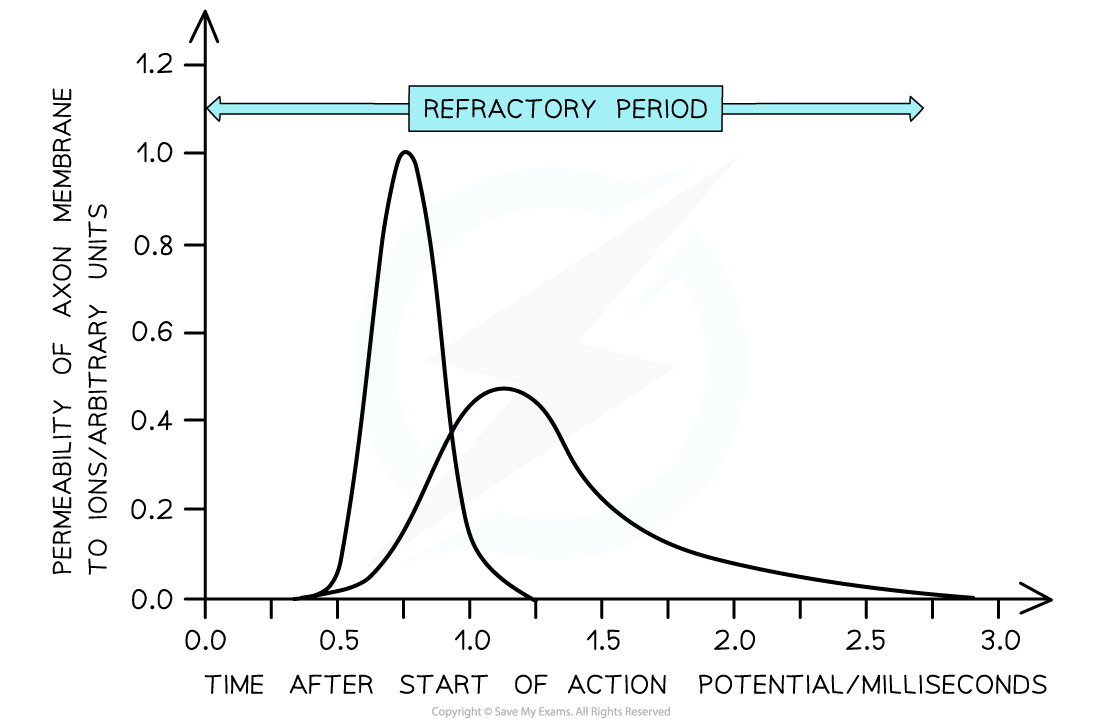Calculating Maximum Impulse Frequency (AQA A Level Biology): Revision Note
Exam code: 7402
Calculating maximum frequency of impulse conduction
After an action potential has occurred axons undergoes a period of recovery and are unresponsive; this is the refractory period
Due to the refractory period there is a minimum time between action potentials
The duration of the refractory period is key in determining the maximum frequency at which impulses can be transmitted along neurones
Maximum frequency of impulse conduction within a certain time can be calculated as follows:
time ÷ duration of the refractory period
Questions often ask for the maximum frequency of impulses per 1 second; this would make the equation:
1 ÷ duration of the refractory period
Units for the result of these calculations could be:
impulses sec-1
action potentials sec-1
Hz
1 Hz is equal to one impulse per second
Worked Example
Figure 1 shows changes in permeability to ions in a section of an axon membrane, and indicates the length of time during which the membrane cannot be stimulated again.

Use the information in Figure 1 to calculate the maximum frequency of action potentials per second along the axon.
Answer:
Step 1: determine the duration of the refractory period
The refractory period is labelled on the graph
refractory period = 2.75 milliseconds
Step 2: convert this to seconds
1 second = 1000 milliseconds
2.75 ÷ 1000 = 0.00275 seconds
Step 3: insert relevant figures into the equation
time ÷ duration of the refractory period
1 ÷ 0.00275 = 363.63
= 364 action potentials sec-1
Examiner Tips and Tricks
The duration of the refractory period is likely to be given in milliseconds but the answer will usually require impulses per second; don't forget to convert milliseconds into seconds so that every part of the equation has the same units.

Unlock more, it's free!
Did this page help you?